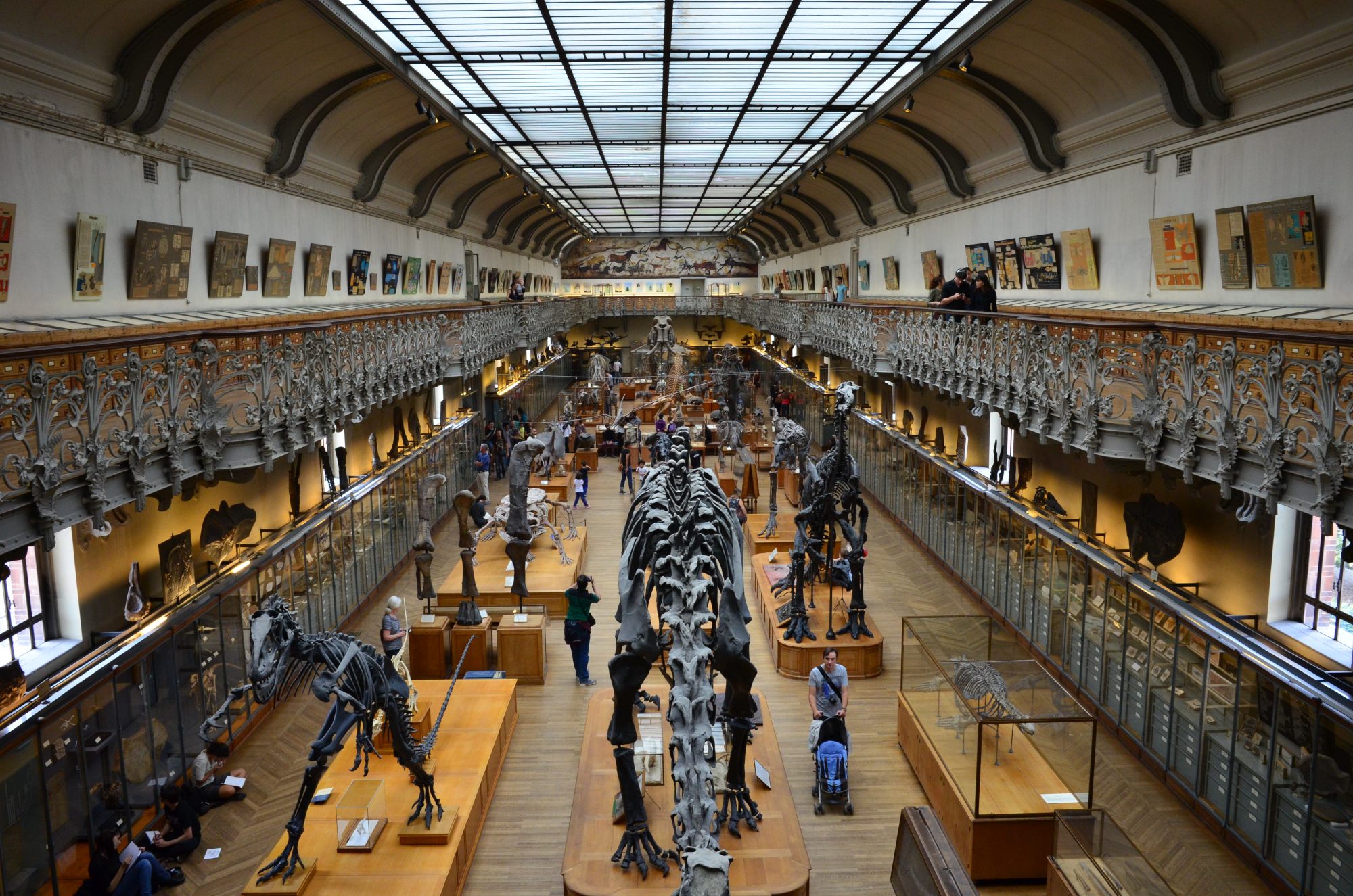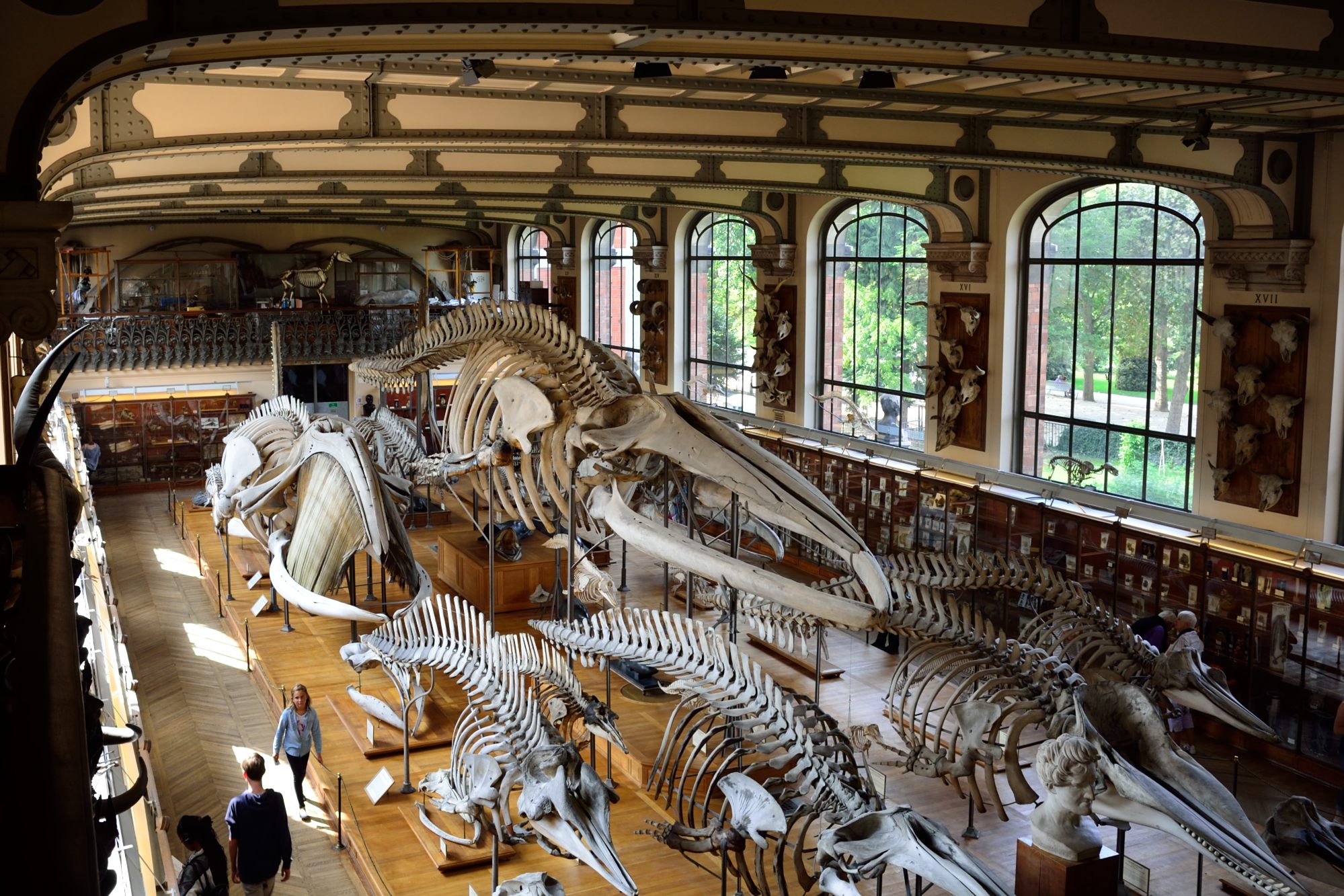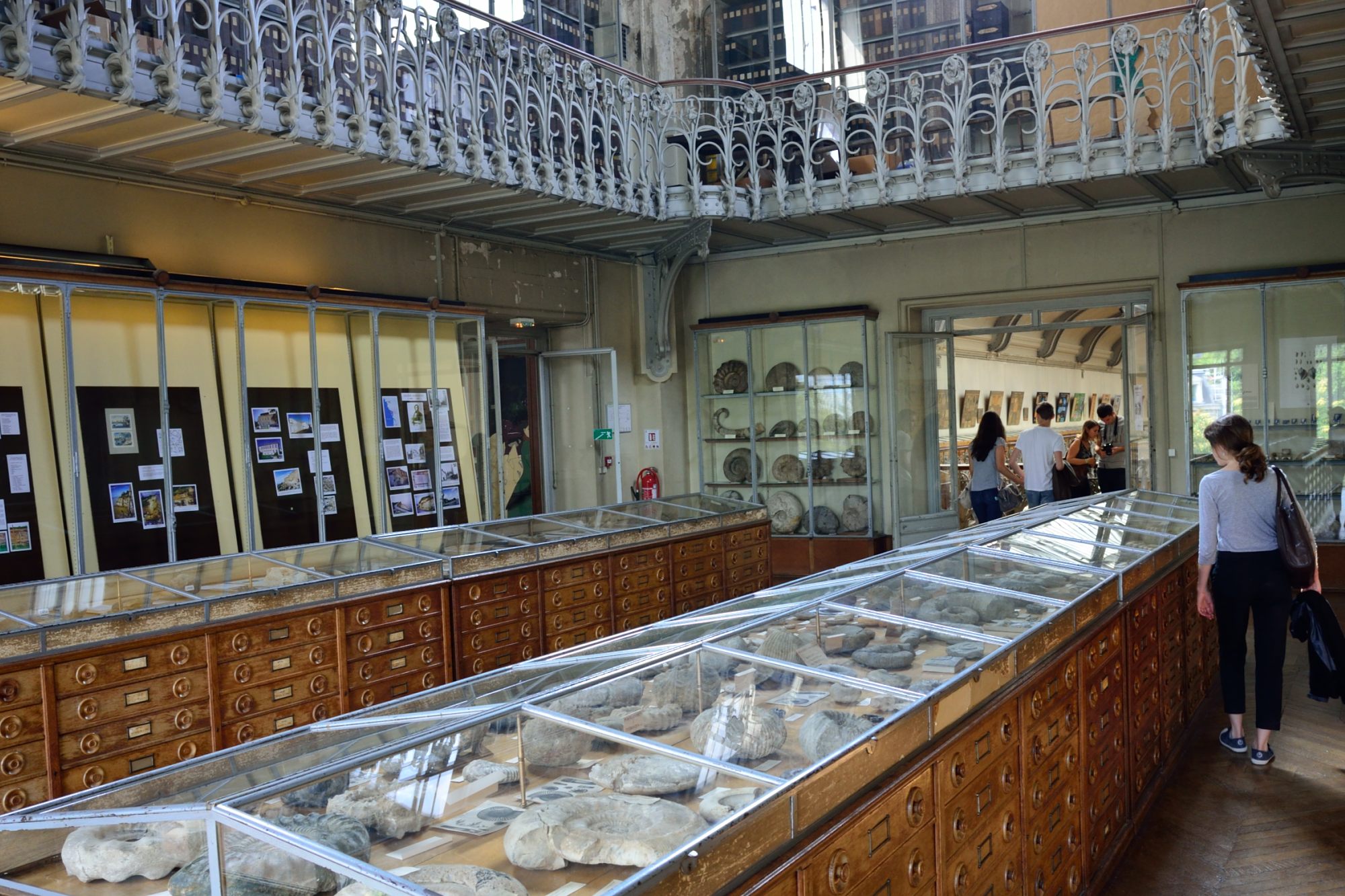The Gallery of Palaeontology at the National Museum of Natural History in Paris encapsulates all that I love about nineteenth century French architecture.
First of all there’s the scale. There’s something special about French public buildings from this time. To my eye the scale is slightly exaggerated; they are a bit too big for we mortals. But it’s not an intimidating or belittling size like a skyscraper; it’s more as though by making the buildings a little too big the architects are encouraging us to grow to fit them; to be a bit better than we are.
By the standards of construction of the time this one is quite modest (a certain Tour Eiffel was going up at around the same time). Like the Tower, this building uses a lot of steel and rivets. These materials showcased French mastery of the latest engineering techniques, but more practically they allow for large windows, huge spans and consequently lots of light and space.
Part of what I love about riveted beams is that the mark of the maker is so much on them. Although they were the most advanced technique of the time I can’t see one without thinking of each rivet being hammered in to place by a human. There’s a lovely conversation I think, between the hand sculpting of the stone friezes around the outside of the building, the steel within, and the scientific endeavour the building celebrates.


